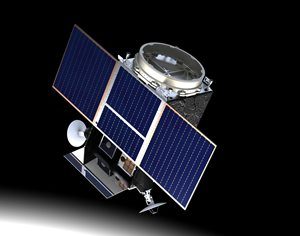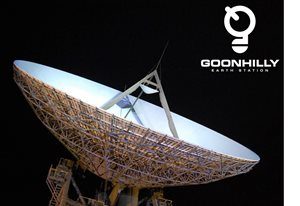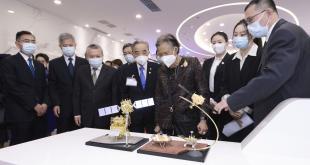
Surrey Satellite Technology Ltd. (SSTL) and Goonhilly Earth Station Ltd (GES) announced on 12 July 2016 a new partnership to go beyond Earth’s orbit and provide a new model of low cost, high value, space exploration and science. With the ultimate aim of supporting a Solar System network, the SSTL-GES Lunar Pathfinder mission and its successors will provide a system to transport payloads to the Moon together with communications links for these payloads and any other deployed assets back to the Earth.
The mission will support the international development and exploration of space, and the first mission will also provide a new opportunity to transport commercial payloads to lunar orbit. A call for flight opportunities for small lunar missions and payloads is now open and is hosted on a dedicated website www.goonhilly.org/lunar. The call targets the global space community from established space agencies, developing space nations, commercial entities, public and private organisations and universities.
Sir Martin Sweeting, SSTL’s Executive Chairman, summed up the significance of the mission by commenting “Affordable transport of space assets to lunar orbit and communications of these assets with Earth are a common barrier to the international development and exploration of our local solar system – the Lunar Pathfinder missions will provide the low cost support infrastructure that allows customers to focus on the science and business aspects of their missions.”

The Lunar Pathfinder mission is designed to be inter-operable with other systems and will use international protocols for communications.
The SSTL-GES Lunar Pathfinder team are already working on the initial baseline design, with technical assistance from the European Space Agency (ESA). SSTL are designing a series of lunar communication satellites and will be building on their heritage of small satellite platforms in Low Earth orbit and Medium Earth orbit to go beyond Earth’s orbit for the first time. GES are upgrading one of the famous antennas at their Goonhilly site in Cornwall, UK, into a deep space ground asset, which will be the first element in a commercial deep space network. In addition, GES will provide a dedicated mission operations centre situated in Cornwall.
The SSTL-GES Lunar Communications Partnership has been selected by ESA for a pilot phase activity as part of their broader initiative to foster Commercial Partnerships for Space Exploration.
“Commercial partnerships play an important role in the exciting ESA vision for space exploration, said David Parker, ESA Director for Human and Robotic Exploration. “ESA stimulates private sector investment and engagement in space exploration through supporting selected commercial initiatives, as business partner and potential future customer. This approach is expected to result in innovative and inspiring approaches for delivering the ESA strategy for space exploration, benefiting both, the private sector partner and the broader ESA stakeholder community.”
Original published at: http://spacewatchme.com/2016/07/sstl-goonhilly-announce-partnership-call-lunar-orbit-payloads/
 SpaceWatch.Global An independent perspective on space
SpaceWatch.Global An independent perspective on space

